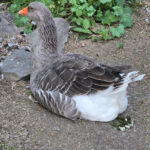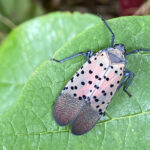House flies, scientifically known as Musca domestica, are common insects found around the globe. Understanding their lifecycle, especially how quickly their eggs hatch, is crucial for effective pest management and gaining insights into insect biology. Like most flies, the house fly undergoes a complete metamorphosis, transitioning through egg, larval, pupal, and adult stages. The duration of each stage is significantly influenced by environmental factors, most notably temperature. This article delves into the fascinating world of fly eggs and their hatching process, providing a comprehensive look at the factors that determine how long it takes for these eggs to hatch and the subsequent stages of the house fly lifecycle.
The Incubation Period of Fly Eggs: Temperature is Key
Typically, house fly eggs hatch within approximately 24 hours. These eggs, often laid in clusters in decaying organic matter, are tiny and whitish. However, this 24-hour timeframe is not a fixed rule. Temperature plays a pivotal role in the development rate of fly eggs. In warmer conditions, particularly in subtropical and tropical climates, the hatching time can be significantly reduced, sometimes to less than 12 hours. The heat accelerates the metabolic processes within the egg, speeding up embryonic development and leading to a quicker hatch.
Conversely, in cooler, temperate, and arctic regions, while house fly eggs generally still hatch within 24 hours, development may be slightly slower compared to warmer climates. Interestingly, eggs laid indoors, where temperatures are often controlled and warmer than outdoor conditions, frequently experience a faster hatching time, mirroring the effect observed in warmer geographical zones. This temperature sensitivity underscores why house flies can proliferate rapidly in warm environments.
Alt text: Close-up of house fly eggs, small and white, deposited on manure, illustrating typical egg-laying environment.
From Egg to Maggot: The Larval Stage Begins
Once hatched, house fly eggs give rise to larvae, commonly known as maggots. These first instar larvae are small, measuring around 5 1/2 mm in length, and are whitish in color. Maggots are the feeding stage of the house fly lifecycle, and they play a crucial role in breaking down organic matter. As they grow, maggots molt through three instars, shedding their skin as they increase in size. Mature larvae can reach lengths of 7 to 12 mm. The larval stage is critical for accumulating energy and resources needed for the subsequent pupal and adult stages. In temperate regions, like much of Canada, house flies typically spend about two weeks in the larval stage. This period is dedicated to feeding and growth, preparing them for the next transformation.
Alt text: Image of house fly larva, a maggot, showcasing its segmented body and creamy white color, typical of the larval stage.
The Pupal Stage: Transformation and Maturation
After the larval stage, maggots enter the pupal stage. This is a transformative phase where the larval tissues are reorganized into the adult fly form. House fly pupae are encased in hard, oval-shaped pupal casings. The color of these casings can vary, ranging from brownish or deep red to dark yellows and even black, indicating different stages of pupal development. Inside these protective casings, the metamorphosis from larva to adult fly takes place.
The duration of the pupal stage is also influenced by temperature. In temperate climates, this development process typically takes anywhere from a couple of days to four weeks. In cooler climates, such as those prevalent in Canada, the pupal stage may extend to three to four weeks to allow for complete development into adulthood. The pupal stage is a period of intense biological activity, although outwardly, it appears to be a resting phase.
Alt text: Photograph displaying house fly pupae within their dark brown casings, highlighting the oval shape and protective nature of the pupal stage.
Factors Affecting the House Fly Lifespan, Starting with Egg Hatching
Several environmental factors impact the entire lifecycle of house flies, starting from the egg hatching time and extending to adult lifespan.
Environment and Temperature
As previously mentioned, temperature is a primary determinant of how long fly eggs take to hatch. Warmer environments accelerate development, not just for eggs but throughout the entire lifecycle. House flies thrive in warm, humid conditions, making tropical and subtropical regions ideal habitats. In these climates, the entire life cycle, from egg to adult, is compressed, leading to shorter lifespans but faster reproduction rates and larger populations. Conversely, cooler climates slow down metabolic rates, elongating each stage of the lifecycle, including egg hatching time to some extent, and the overall lifespan of the fly.
Diet and Food Availability
While diet might not directly affect egg hatching time, it significantly influences larval development and overall fly lifespan. House flies are attracted to decaying organic matter, garbage, feces, and similar materials, which serve as both breeding grounds and food sources. Interestingly, studies suggest that constant access to abundant food can paradoxically shorten adult fly lifespan. Flies with readily available food may live for around 45 days, whereas those with limited food access, perhaps due to a need to search for sustenance, can live approximately 10 days longer. This suggests that the energy expenditure in seeking food might contribute to a slightly extended lifespan in less food-rich environments.
Seasonality
Seasons play a crucial role in modulating house fly activity and lifespan. House flies are most active during warmer months. Summer temperatures promote rapid development and abundant food sources, leading to shorter lifespans in each generation but increased population turnover. During winter, in colder climates, house flies enter a state of hibernation or reduced activity. This overwintering phase significantly slows down their metabolism and can extend their overall lifespan. Canadian climates, with their distinct seasons and generally cooler temperatures compared to tropical regions, tend to support longer house fly lifespans due to these seasonal metabolic changes.
Conclusion: The Rapid Start of the Fly Lifecycle
In summary, house fly eggs typically hatch within 24 hours, but this duration is highly sensitive to temperature. Warmer temperatures can reduce hatching time to under 12 hours, while cooler temperatures may slightly extend it. This rapid egg hatching is just the first step in the house fly’s efficient lifecycle, which is heavily influenced by environmental factors like temperature, food availability, and season. Understanding these factors is key to comprehending house fly ecology and developing effective strategies for managing these ubiquitous insects. The quick hatching of fly eggs underscores their ability to rapidly populate environments, especially when conditions are favorable.

